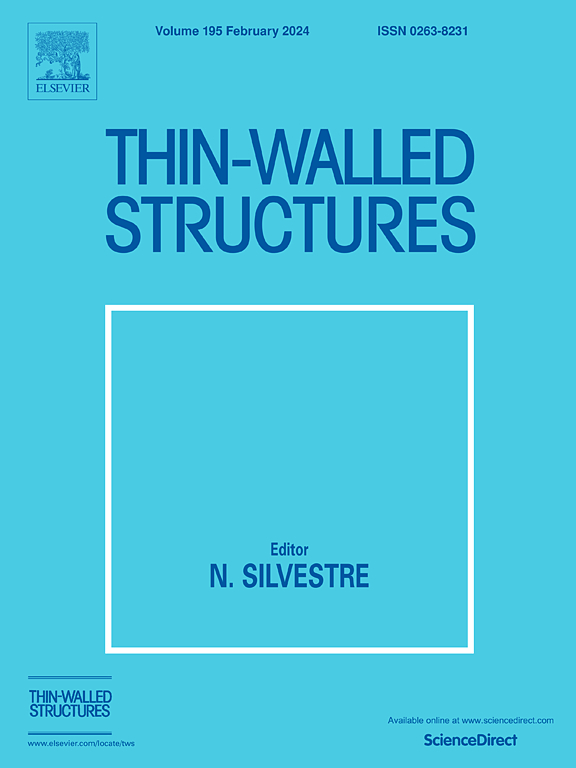On the bending of non-shallow polynomial shells of revolution
IF 6.6
1区 工程技术
Q1 ENGINEERING, CIVIL
引用次数: 0
Abstract
Thin non-shallow polynomial shells of revolution have considerable potential for use as elevated open-top water-retaining structures, and as components of egg-shaped sludge digesters and other large multi-shell liquid-containment concrete structures. However, their structural behaviour as a particular class of thin shells has hardly been studied. Unlike other non-shallow shells of revolution, the slenderness parameter λ of higher-order polynomial shells of revolution generally varies quite rapidly over the edge zone of the shell, which invalidates the use of the popular Geckeler simplification in the evaluation of edge effects. In this paper, we propose, for the first time in the literature, a procedure for the determination of the effective slenderness parameter in the edge zone of such shells, making it possible to take advantage of the Geckeler approximation in the computation of the edge effect, without too much loss of accuracy. The accuracy of the approach is illustrated through consideration of the bending of a parabolic shell of revolution, for which some general parametric results are presented, and actual stresses calculated for the case of a uniformly pressurized shell with fixed edges. Provided the variation of λ does not exceed 30% over the edge zone (which is usually the case), the proposed approach is shown to yield reasonably accurate results (consistent with the errors already inherent in the Geckeler formulation), and is clearly applicable to polynomial shells of higher order.
非浅多项式旋转壳的弯曲问题
薄的非浅多项式旋转壳具有相当大的潜力,可用作高架开顶挡水结构,以及蛋形污泥消化器和其他大型多壳容液混凝土结构的组成部分。然而,它们作为一类特殊的薄壳的结构行为几乎没有被研究过。与其他非浅旋转壳不同,高阶多项式旋转壳的长细参数λ通常在壳的边缘区变化相当快,这使得在评估边缘效应时使用流行的Geckeler简化失效。在本文中,我们在文献中首次提出了一种确定这种壳的边缘区有效长细比参数的方法,使得在计算边缘效应时可以利用Geckeler近似,而不会有太大的精度损失。通过考虑抛物线旋转壳的弯曲,给出了一些一般的参数结果,并计算了固定边缘均匀受压壳的实际应力,说明了该方法的准确性。假设λ在边缘区域的变化不超过30%(通常是这种情况),所提出的方法被证明可以产生相当准确的结果(与Geckeler公式中固有的误差一致),并且显然适用于高阶多项式壳层。
本文章由计算机程序翻译,如有差异,请以英文原文为准。
求助全文
约1分钟内获得全文
求助全文
来源期刊

Thin-Walled Structures
工程技术-工程:土木
CiteScore
9.60
自引率
20.30%
发文量
801
审稿时长
66 days
期刊介绍:
Thin-walled structures comprises an important and growing proportion of engineering construction with areas of application becoming increasingly diverse, ranging from aircraft, bridges, ships and oil rigs to storage vessels, industrial buildings and warehouses.
Many factors, including cost and weight economy, new materials and processes and the growth of powerful methods of analysis have contributed to this growth, and led to the need for a journal which concentrates specifically on structures in which problems arise due to the thinness of the walls. This field includes cold– formed sections, plate and shell structures, reinforced plastics structures and aluminium structures, and is of importance in many branches of engineering.
The primary criterion for consideration of papers in Thin–Walled Structures is that they must be concerned with thin–walled structures or the basic problems inherent in thin–walled structures. Provided this criterion is satisfied no restriction is placed on the type of construction, material or field of application. Papers on theory, experiment, design, etc., are published and it is expected that many papers will contain aspects of all three.
 求助内容:
求助内容: 应助结果提醒方式:
应助结果提醒方式:


